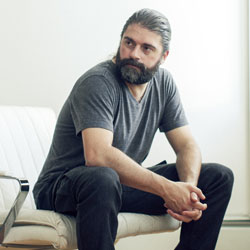 Sebastián Cordero made a movie about a team of astronauts searching for life on Jupiter’s moon Europa on a limited budget. He was bound to have stories to tell and, sure enough, ShockYa.com wound up sitting down with the director for a full 30 minutes to discuss everything from the early stages of the process to building his sets, editing footage from eight different cameras, the film’s astonishing ending, and more.
Sebastián Cordero made a movie about a team of astronauts searching for life on Jupiter’s moon Europa on a limited budget. He was bound to have stories to tell and, sure enough, ShockYa.com wound up sitting down with the director for a full 30 minutes to discuss everything from the early stages of the process to building his sets, editing footage from eight different cameras, the film’s astonishing ending, and more.
In an effort to tempt you to see the film, but not spoil the prime element that makes it a truly unforgettable adventure, we’re splitting up the interview into two sections. Part two will feature Cordero discussing the film’s grand finale and will go live on ShockYa on Sunday evening, after you’ve had a chance to experience the epic conclusion for yourself.
But for now, we bring you part one in which Cordero offers a spoiler-free sense of what it took to bring the Europa Ventures mission to life by touching on the following topics …
00:08 – Was found footage part of the original script?
02:38 – Justifying the found footage perspective.
06:14 – The Silicon Imaging 2K camera.
07:40 – Building the spaceship set.
08:40 – The camera setup.
09:25 – Editing footage from eight cameras.
10:40 – Using green screen.
11:45 – Working with his actors.
13:40 – The truth behind the movie and working with specialists.
15:55 – Influence of the documentary, “For All Mankind.”
17:25 – Would Cordero risk his own life for such a discovery?
Check out all of that in the video interview below, catch “Europa Report,” which is currently available on iTunes, On Demand, and begins its run in theaters in New York City, Washington, DC, and West Hollywood today, and then keep an eye out for the spoiler-heavy portion of our interview on Sunday.
